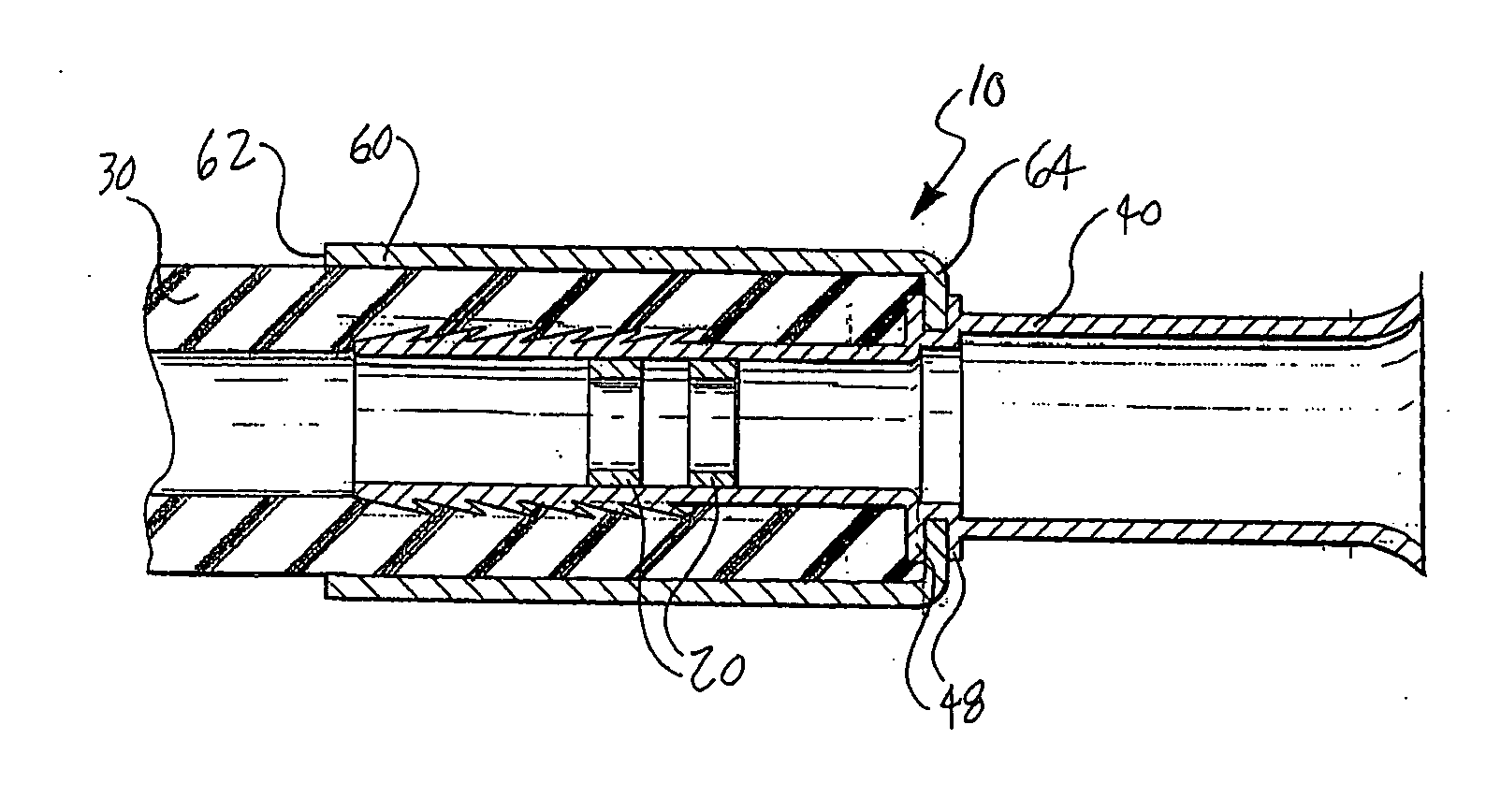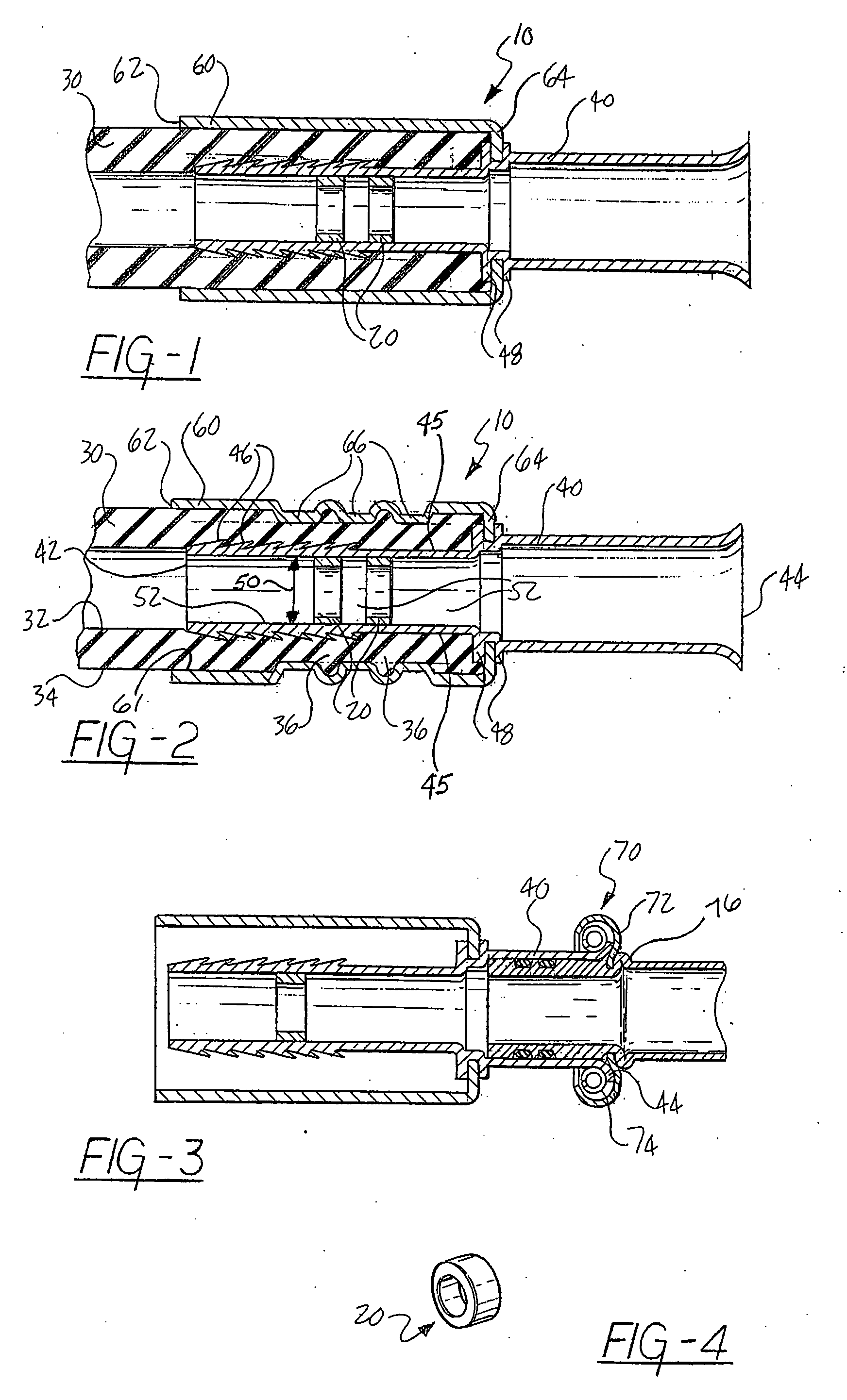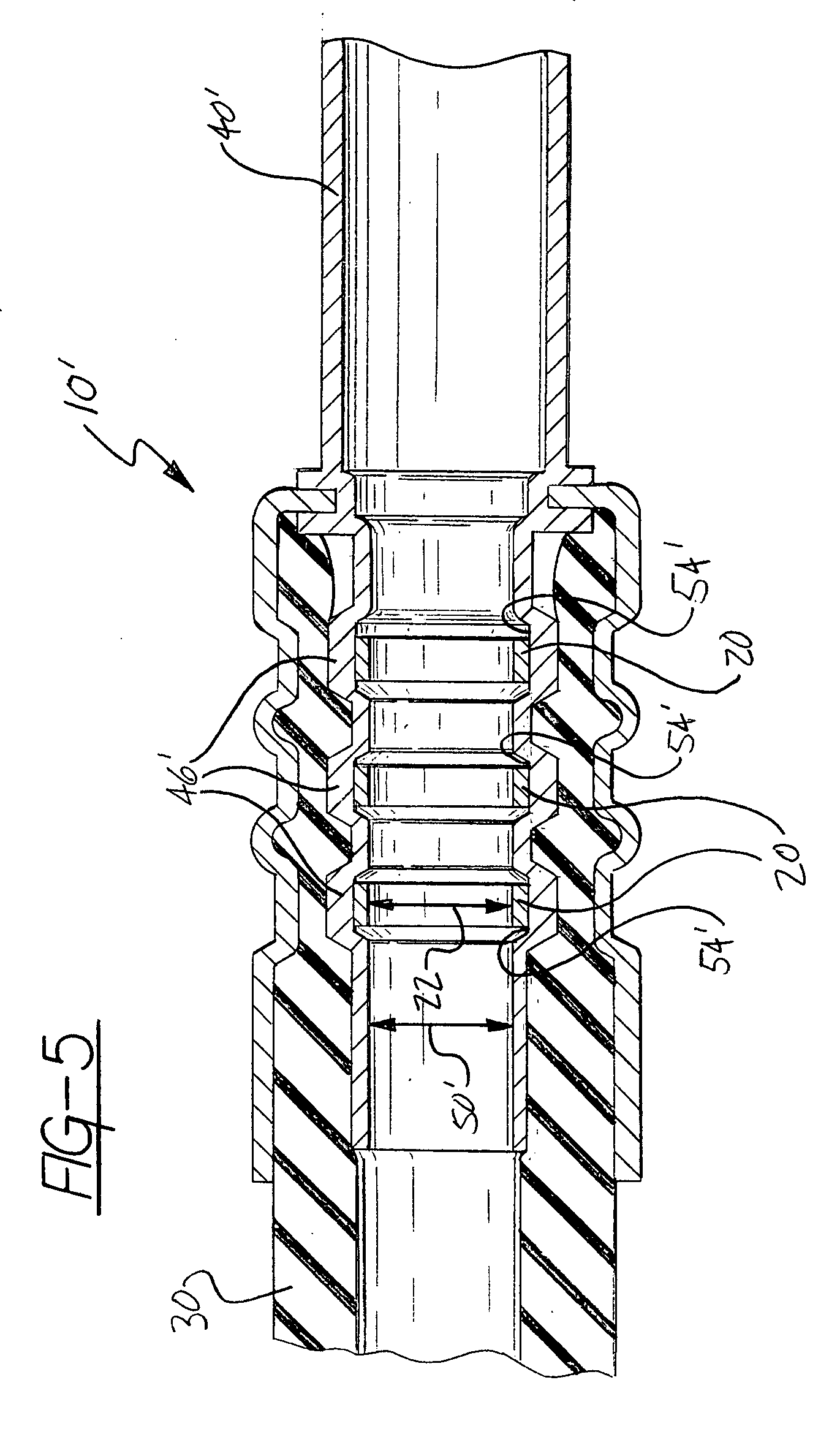Reinforcement for a hose coupling
a technology of hose couplings and reinforcements, which is applied in the direction of hose connections, pipe connection arrangements, mechanical equipment, etc., can solve the problems of not protecting the inner sleeve of the coupling from deformation, heavy gauge steel adds unwanted cost and weight to the coupling assembly, and sealing does not in any way prevent the inner sleeve from deformation, so as to improve the integrity and long-term durability of the hose coupling, and prevent the inner sleev
- Summary
- Abstract
- Description
- Claims
- Application Information
AI Technical Summary
Benefits of technology
Problems solved by technology
Method used
Image
Examples
Embodiment Construction
[0031] Referring to the Figures, particularly to FIGS. 1 and 2, there is shown a coupling 10 having at least one reinforcing ring 20 mounted therein according to the present invention. The reinforcing ring 20 is shown in perspective in FIG. 4. The coupling 10 connects a hose 30 to a cylindrical inner body or inner sleeve 40. The inner sleeve 40 may in turn be connected to other components of an air-conditioning system. The coupling 10 is generally used in automotive air-conditioning systems for transporting refrigerant fluid. However, the present invention may be used in any application for a connection requiring characteristics similar to those described herein.
[0032] Referring now to FIG. 2, the inner sleeve 40 has a first end 42 over which the hose 30 is mounted and a second end 44 that is a termination point or acts to engage other components of the air-conditioning system. An outer diameter 45 of the inner sleeve 40 has outward projections or serrations 46 that engage and seal...
PUM
| Property | Measurement | Unit |
|---|---|---|
| inner diameter | aaaaa | aaaaa |
| outer diameter | aaaaa | aaaaa |
| pressure | aaaaa | aaaaa |
Abstract
Description
Claims
Application Information
 Login to View More
Login to View More - R&D
- Intellectual Property
- Life Sciences
- Materials
- Tech Scout
- Unparalleled Data Quality
- Higher Quality Content
- 60% Fewer Hallucinations
Browse by: Latest US Patents, China's latest patents, Technical Efficacy Thesaurus, Application Domain, Technology Topic, Popular Technical Reports.
© 2025 PatSnap. All rights reserved.Legal|Privacy policy|Modern Slavery Act Transparency Statement|Sitemap|About US| Contact US: help@patsnap.com



